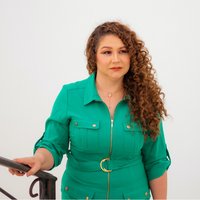Last week, a report released by the Pew Research Center stated that “Child marriage is rare in the U.S., though this varies by state.” This report gives state-by-state and national data, estimates that 57,800 children aged 15-17 were married as of 2014, and briefly cites the kinds of laws that make child marriage legal in almost every state.
The Tahirih Justice Center applauds Pew for paying attention to this issue. But Pew researchers missed the real headline – they should have been astonished at their findings and exclaimed:
“It’s 2016, and yet America still has a serious child marriage problem!”
Pew’s data also undercounts the size of the problem on an annual basis since their totals don’t include:
- Married children under age 15. Tahirih has obtained state health department data that reveals that girls as young as 12 have been married in recent years in Texas, for example, and in Virginia, as young as age 13.
- Children aged 15-17 who were married, but by the time of the survey, had already been divorced. Divorce rates for child marriages are staggeringly high (see below).
- Married individuals aged 18 or older at the time of the survey who were 17 or younger when they married. Pew states that the number of early marriers triples for 18- and 19-year-olds. At least some of those young adults likely married as younger teens.
Pew does point out some states where child marriage is most common but fails to flag the kinds of alarming totals such states can see in a single year: for example, in Texas in 2000, state health department data reveals that about 4500 children were married across Texas.
Cumulatively, too, the size of America’s child marriage problem is huge: a 2011 research report projected that over 9.4 million U.S. women had married at age 16 or younger and that nearly 1.7 million had married at age 15 or younger.
While some of those marriages may have happened decades ago, the truth is that many states’ laws on minimum marriage age have remained the same for decades. And some (like Massachusetts) still enshrine values that prioritize parents’ wishes over children’s welfare and follow case law dating back to the 1800s.
For a fuller picture, the Pew report should have characterized the state laws that permit – and even facilitate – child marriage as so slack in some instances that they put the United States in the company of countries like Iran, where very young girls can be married with permission from a court and their father. And while Pew cites that 45% of boys and 55% of girls aged 15-17 were married in the United States as of 2014, in a number of states where Tahirih has examined a decade’s worth of data, the vast majority (over 85%) of the children marrying are girls.
Jeanne Smoot, Senior Counsel for Policy and Strategy at Tahirih, said:
“The Pew report should have called out the 27 U.S. states that have no bottom line age ‘floor’ below which a child cannot be married, so long as a judge approves, and revealed the 8 states and the District of Columbia where clerks, not judges, approve all marriage licenses involving children. This puts the United States well behind many other Western countries that set firm ‘floors’ at age 18 or involve judges in every case where a waiver is sought for 16- and 17-year-olds.”
Pew also fails to note the overlap between forced marriages and child marriages, even though a 2011 national survey by Tahirih documented as many as 3,000 cases of forced marriage encountered by service-providers in a 2-year period, many involving girls under age 18.
In any event, the real takeaway should be: no matter how many children are married, the impact of marrying young on a child’s life can be severe, devastating, and lifelong.
U.S. studies show that children who marry have more mental health issues, are 50% more likely to drop out of high school and 4 times less likely to finish college, wind up divorced up to 80% of the time, and are much more likely to live in poverty.
The acute vulnerability of girls and young women in the U.S. to physical, emotional or verbal abuse also raises major red flags with respect to child marriage. Nationally, girls and young women experience the highest rates of intimate partner violence among all such victims, and girls aged 16-19 face victimization rates that are almost triple the national average.
All of these factors mean that when individuals marry as children, they are much more likely to face violence, be economically dependent, and find themselves trapped in an abusive marriage.
Tahirih is so committed to ensuring that girls are given the opportunity to lead healthy, safe, and fulfilling lives that we’ve been waging a bold campaign to end child marriage by raising the legal marriage age in every state.
We’re already making historic progress: thanks to Tahirih’s leadership, this summer, Virginia became the first state in the country to enact a law to limit marriage to legal adults.
Now, Tahirih is exposing the web of state legal regimes that make child marriages possible and can leave children with no way to prevent or escape a marriage they do not want.
In the coming weeks, we will be releasing a series of groundbreaking legal resources, including:
- A compilation of all 50 states’ laws on minimum marriage age and exceptions, with an “at a glance” summary of how many states set which age “floors” for marriage;
- An introduction to why the best safeguard is to make 18 the firm minimum marriage age; and a set of “fast facts” on states’ current minimum marriage age and exceptions regimes with respect to “better practices” or instead, “worst offenses;”
- Charts on which states have the worst minimum marriage age laws, as well as which have better provisions;
- Detailed explanations of how states’ current legal regimes fall short, either as to particular provisions or taken as a whole;
- A comparison of states’ minimum marriage age laws and statutory rape laws, showing in which states you can get married younger than you can legally have sex; and
- A backgrounder on the restrictions in many other state legal regimes that affect a minor’s ability to prevent or escape a forced or abusive marriage (including laws that limit a minor’s ability to run away, go to a shelter or stay with a friend, and file for a protective order).
To learn more about child marriage in the United States, click here for a Tahirih backgrounder.
Please contact Rebekah Stewart at [email protected] with questions about Tahirih’s work on child marriage policy.





